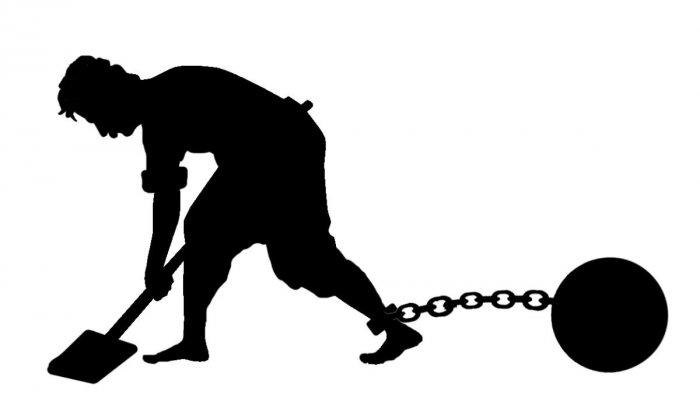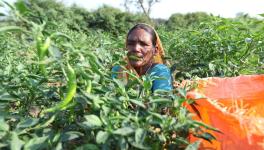Bitti Chakri: Bonded Labour in North Karnataka

Representational Image.
On August 20, 2019, Jeevika, an organisation working to end bonded labour in Karnataka submitted a petition to the Karnataka State Human Rights Commission (KSHRC) seeking to treat the regressive practice of ‘Bitti Chakri’. They also sought to provide relief to those engaged in such labour through the petition.
Bitti chakri or unpaid labour is a form of customary bonded labour performed exclusively by the dalit communities in several districts of North Karnataka. Dr. Kiran Kamal Prasad, who heads Jeevika, has been involved with the cause of eradication of bonded labour since the 1980s. He established Jeevika in 1993. In 2012, the practice of bitti chakri was brought to Jeevika’s notice by a Belagavi-based activist of the organisation. While most bonded labourers are dalits (85-90%), persons performing bitti chakri (which literally means free labour) are 100% dalits. The organisation commissioned a study to understand the nature and extent of this practice. They conducted a census type survey in districts of North Karnataka and an in-depth study in three villages of Belagavi district.
Nature of Bitti Chakri
The study revealed that it is practiced in 15 districts of North Karnataka. It is performed mainly by the Madiga sub-community of the dalits in all districts, except in Bidar district where it is performed by the Holeyas. The labourers have customary obligation with their landlords to perform certain duties for little or no pay or pay in kind or left over food. This obligation is passed on to the labourers’ children. Hence, Dr. Prasad says that though the labour is performed by an individual, the entire family is affected as the customary obligation is handed down from one generation to the next. Besides, if the person rendering the service is unable to perform the daily chore for some reason, he/she is obliged to send someone from the family to perform the chore.
Also watch: Enslaved Without Chains - Bonded Labourers Denied Basic Rights
Such persons perform various tasks such as cleaning and washing the cattle sheds, carrying cow dung. “They have to carry the baskets of cow dung over their head. Liquid cow dung mixed with cow urine runs off their faces and shoulders. This makes them stink. Quite often, ‘bitti chaakri’ persons have complained of losing their sight because of carrying the cow dung over their heads for many years. They must clean cereals, lentils and vegetables, break firewood, bring provisions from shops and so on,” says Dr. Prasad. These are daily chores which may take anywhere between one to three hours. The rest of the day they are engaged in regular wage labour. Apart from these duties, during special days such as marriages, death ceremonies and festivals in the homes of their landlords, they have to perform special duties such as cleaning the house, washing the cattle, clearing up after meals and other such menial tasks. During such times, they work throughout the day for days together (usually 8-10 days) and cannot go for regular wage labour.
The remuneration received for such labour is nil or negligible. For the daily labour, workers are given left over food. They are also given an annual payment of grains and occasionally some pulses and jaggery. This is far below the minimum wage or prevalent wage. According to the notification of the Karnataka government, for the period 1-4-2019 to 31-3-2010, the minimum wage for different types of agricultural labour is Rs. 337.72 per person per day. In the three villages where the study was conducted, the prevalent wage was Rs. 100-150 for women and Rs. 200 for men. In these villages, the annual grain payment for bitti chakri workers is a bag of 100 kilos of jowar (sorghum) for every cow/buffalo in their care. Even at prevalent wage rates, a woman wage labourer can buy a bag of good quality jowar if she works for 15-20 days. Besides on special occasions, she has to work without any wage. For services rendered on special occasions they and their families get food. They may also get a few vessels and old clothes and occasionally some small sums of money.
Extent of Bitti Chakri
The survey identified that 3,387 persons are engaged in bitti chakri in 964 villages of the 15 districts. Jeevika prefers to report these as 3,387 families rather than persons as the nature of this labour is such that it affects the entire family. Of these 1,963 (52%) are men and 1,424 (42%) are women.
The maximum number of workers (682) was in Bidar district and the minimum was in Davangere district (39). There are another 11,000 families that render such labour only during special occasions, i.e. during marriage, festivals and so on.
There is high level of illiteracy among such workers with 2,887 (85%) being illiterate. Bitti chakri is performed only by dalits, with Madigas forming 85% of such workers. Another 14.55% of workers are from the Holeya community. Two persons from a Scheduled Tribe (Beda community) were also found to be doing bitti chakri.
A total of 2,308 workers (68%) have been engaged in this practice for more than 11 years. There are 106 persons who have been engaged in this practice from 40-60 years, which is an indicator of how ancient this practice is. As has been mentioned above, if the person rendering such service is unable to perform their daily duties, they have to send a substitute from the family. In 39% of cases, the substitute thus sent were the wives of the men workers. In 88% of such cases, the cause for substitution was sickness of the worker or absence from the village.
Unlike other forms of bonded labour, where debt is the main cause for bondage, loans are not a major factor that bind the bitti chakri workers to their masters; only 150 persons (4.43%) had taken loans from their masters. The bondage arises from customary obligation attached with the caste system.
Also read: Modern Slavery Is Alive and Thriving in India, Say Rescued Bonded Labourers
Jeevika also found that extreme poverty and the opportunity to access some additional food are the reasons why dalit families engage in bitti chakri. A majority is landless (2,650 persons or 78%). Of the remaining 22%, except for two families, all have small holdings of dry land. Two families have irrigated land. The land holdings range from less than an acre to few who hold up to 5 acres. The fact that even families with some land holding engage in this practice reveals the force of customary obligation. The study report says that workers experience a sense of humiliation and pain at having to perform this labour and are also subjected to scolding and abuse by their masters. However, due to obligation, they cannot stop providing this service.
In spite of the nature of customary obligation, the practice has not been recognised as bonded labour according to the Bonded Labour System (Abolition) Act 1976. As per the act, labour is considered as bonded labour if the worker is forced to render service due to customary obligation, obligation devolving on him by succession, due to birth in a particular caste or community and where wages for such service is below the minimum wage prescribed by the government or below prevalent wage in the area. Jeevika has been advocating to gain recognition for bitti chakri as a form of bonded labour and secure reliefs for such workers as prescribed under the Act. In the petition submitted to the KSHRC, Jeevika sought the following reliefs:
-
Directing Government of Karnataka (GoK) to treat ‘bitti chaakri’ as bonded labour;
-
Fixing minimum wages for ‘bitti chaakri’ on an hourly basis
-
Minimum Wages to be fixed as double that of agricultural labour considering its arduousness and humiliating aspect
-
Directing GoK to bring out a special legislation on ‘bitti chaakri’
-
Directing state Social Welfare Department to bring out a plan for overall development of people in ‘bitti chaakri’ including their families.
The Additional Chief Secretary of Karnataka had directed all Deputy Commissioners of the said districts to inquire into this practice and initiate action. At the hearing with the KSHRC on August 20, 2019, the Chairperson of the Commission directed Jeevika to press for action at the level of the Deputy Commissioners. In the absence of any action, another representation is to be made before the KSHRC on October 22, 2019. The organisation is now getting ready for a round of action in the field where workers engaged in bitti chakri are themselves empowered to submit representations.
The author is an independent broadcaster and writes on development issues.
Also read: “Dalits and Students are Being Systematically Abused and Oppressed”
Get the latest reports & analysis with people's perspective on Protests, movements & deep analytical videos, discussions of the current affairs in your Telegram app. Subscribe to NewsClick's Telegram channel & get Real-Time updates on stories, as they get published on our website.
























